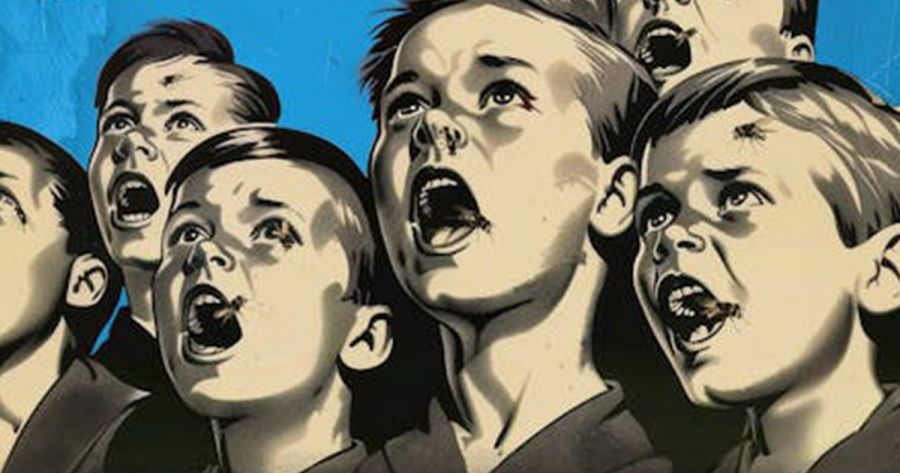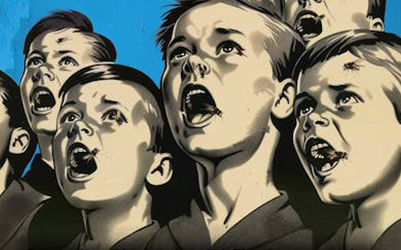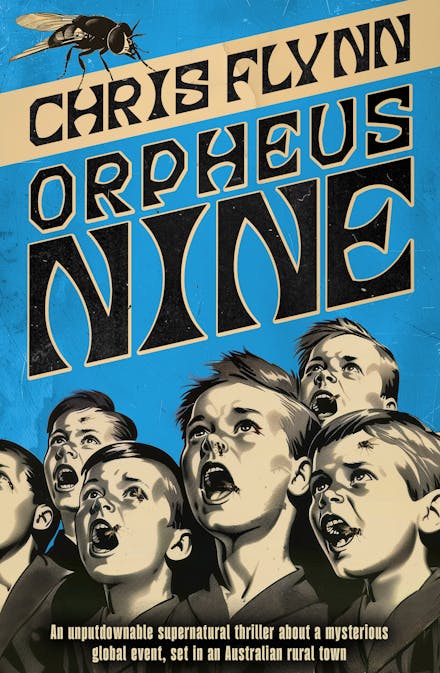
- Free Article: No
- Contents Category: Fiction
- Review Article: Yes
- Article Title: Killed for sport
- Article Subtitle: Chris Flynn's dystopian new novel
- Online Only: No
- Custom Highlight Text:
Chris Flynn’s Orpheus Nine takes as its title the name given to the grisly mass death event that provides the novel’s premise and animates its plot. The event afflicts people across the globe at an identical moment and in an identical way, and its ill-fated victims are all children, specifically nine-year-olds. Curious already, owing to its scale and arbitrary application, this phenomenon proves all the stranger for what occurs immediately before these children finally succumb to its brutal consequences. Before their bodies swell and distort, before their organs fail due to an overload of sodium chloride, they sing, in angelic chorus, a Latin translation of a verse from King Lear: ‘As flies to wanton boys are we to the gods; / They kill us for their sport.’
- Featured Image (400px * 250px):

- Alt Tag (Featured Image): Morgan Nunan reviews ‘Orpheus Nine’ by Chris Flynn
- Book 1 Title: Orpheus Nine
- Book 1 Biblio: Hachette, $32.99 pb, 294 pp
- Book 1 Cover Small (400 x 600):

- Book 1 Cover (800 x 1200):

- Book 1 Readings Link: https://www.readings.com.au/product/9780733652271/orpheus-nine--chris-flynn--2025--9780733652271#rac:jokjjzr6ly9m
Owing to the volume of these deaths – one hundred and thirty million the first day, hundreds of thousands each following day – and the absence of solutions in the face of such inexplicable suffering, governments are at a loss to deal with the fallout, societal systems and structures are placed under extreme strain, and an atmosphere of apprehension and fear engulfs the globe as the turmoil begins to seed extremism and violence. Flynn’s novel spans the first year of this imagined disaster, focusing on the fictional Australian country town of Gattan and an ensemble of characters who share long histories both with each other and the town they call home.
The novel opens at a junior soccer match in Gattan. With one exception, the players are all nine-year-olds. By the end of the prologue they will become part of the ‘first wave’ of Orpheus Nine victims. The three central figures of the novel are each in attendance on the sidelines. Jess, Hayley, and Dirk have lived in Gattan all their lives. They were friends at school together, and their interpersonal entanglements, romantic or otherwise, have followed them into adulthood. Dirk is the smug inheritor of a successful local jewellery business. He and his wife now have two children, seventeen-year-old Sky and ten-year-old Alex, who is playing on the pitch. Hayley, a pushy health influencer, has a daughter named Ebony, who, as an eight-year-old, is set to be treated ‘like Javan Rhinos or Amur Leopards, fragile species on the verge of extinction’. Jess, a foul-mouthed hairdresser with a chip on her shoulder, will soon be mourning the loss of her nine-year-old, Tyler, who shares the soccer pitch with Alex but, unlike the latter, was not lucky enough to celebrate his tenth birthday in time to be spared. Excepting the prologue and epilogues, the nine chapters largely follow Jess, Hayley, or Dirk, and chart the onset and escalation of Orpheus Nine, with Gattan representing in microcosm the havoc playing out all over the world.
Each of the characters come to exemplify a subset of the community’s responses and positioning in relation to the crisis. For Dirk, who is spared the loss of a child, the shifting landscape suggests a ‘golden opportunity’ for his family to navigate a higher rung in a new social order. For Hayley, the desperation to save her daughter manifests in a hyperfocus on finding saltless food alternatives – this being, among other theories, a rumoured means of combating Orpheus Nine – and obsessive policing of her daughter’s eating habits. For Jess, the loss of her son, and the lack of empathy from people like Hayley and Dirk, pushes her into isolation, seeking community in online spaces where conspiracy theories and extremist views are rife.
While expressly set in a post-Covid Australia, Flynn elects to obscure details that might allow Gattan to be located with geographical specificity, including by eschewing express identification of the state or nearest city. Combined with the town’s intentional nondescript features, be it the generic take-away outlets and cheap retailers, or its arbitrary and isolated position (‘a backwater town at the arse end of the world’), Flynn’s oblique representation of place invites allegorical readings. As the narrative unfolds, real-life analogues – for example, climate change, global pandemics, or the rise of far-right extremism – variously resonate, without ever fully crystallising. Indeed, the most compelling aspect of the first three chapters involves the process of radicalisation for two of its central characters, though the momentum of this section, and its eerie relevance to the contemporary moment, are somewhat blunted by the decision to follow it with three successive chapters of analepsis. By the time Flynn returns readers to the narrative’s present, the situation in Gattan (and the world) has changed significantly.
The supernatural premise is broadly in keeping with Flynn’s two most recent books for adult readers, the novel Mammoth (2020) and the short story collection Here Be Leviathans (2022), both of which included fabulist or speculative elements, especially non-human narrators, and, combined with emphases on formal play and humour, called to mind the fiction of American author George Saunders. While this latest novel adopts a more conventional prose style and point of view by comparison, utilising both third-person omniscient narration and colourful free-indirect speech, there are connections between its form and content that belie this initial impression. At its most distant, the narration lacks any obvious emotion or affect, can be suffused with irony, and is capable of providing a chilling contrast to the horror being narrated. Yet such registers also interact with more narrow points of view, as when the distinct voices of Jess, Hayley, and Dirk exert a welcome presence on the page. These shifts in register, a sometimes uneasy tension with narrative content, and a polyphony of voices prove a fitting formal choice for the depiction of a world slipping beyond any semblance of order or balance.


Comments powered by CComment